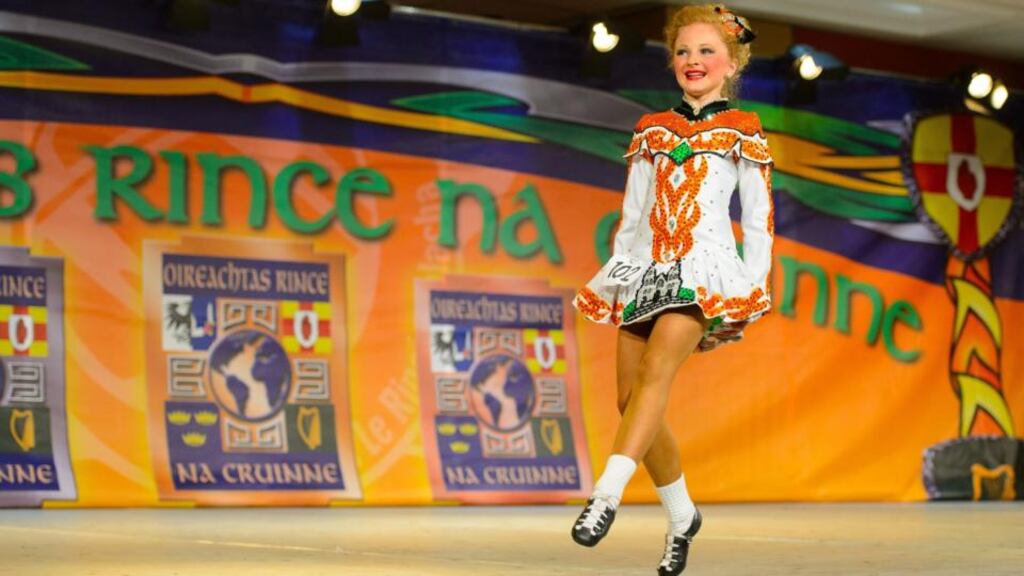Stefan Orheanu from Romania, Petr Kotov from Russia, Francisco Lemus from Mexico and Yuika Nakagawa from Japan have one thing in common: each of them is a superb Irish dancer.
The four are among 5,000 competitors who have taken to the stage at a London hotel this week for the 44th World Irish Dancing Championships – the first time in its history it has been held in England.
The championships have attracted attention: Jeremy Paxman closed an edition of BBC Newsnight by introducing two young world champions – Gerard Byrne from Co Donegal and Julia O'Rourke from New York – as they performed a hard-shoe reel.
Not all of the coverage, however, has been welcome: the Daily Telegraph spoke of dancers "smiling beneath identikit poodle-curl wigs, held in place by a salon's worth of hairspray, their faces are made up in Oompa Loompa orange so that each looks unnervingly like a miniature Dolly Parton . . . complete with stick-on eyelashes and red lips".
The wigs do capture one's attention. They are a legacy from the days when girls competed in Feis competitions on a Sunday when they were wearing their Sunday best, explains dancing teacher and competition volunteer, Dearbhla Lennon. "It used to mean two days in curlers and bags under your eyes because you hadn't got any sleep," she told The Irish Times on a crowded landing in the Hilton Metropole Hotel on Edgware Road.
Eventually that was replaced by the wigs. Some, however, have now abandoned the full wigs, preferring a ballet dancer-style bun, but few girls go on stage beneath harsh stage lighting without some degree of adornment.
Lennon, who competed in the championships and wore a wig when she did, says she thinks the full wigs will eventually disappear, "but I don't think you can bring a hatchet down on it".
Training
Make-up rules are relaxed for the world championships. In Ireland, under-11s are not allowed wear make-up, though in London the few competing in that group may do so.
The journey to Edgware Road has been difficult. Each student from the Murchu Duiginn School of Irish Dancing, which draws in pupils from northwest London and Hertfordshire, have trained, or competed seven days a week for months.
“That’s two to three hours every day, and a competition every Sunday,” says dance teacher, Maria Diggins-Murphy. “It’s really tough. We have had two girls placed here, and a boy who came second.”Fifteen-year-old Jack Quinn, from Castleknock in Dublin, who has been involved in Irish dancing for seven years, modestly accepted congratulations on his win in the under-16 grade . He says he treats it as a sport, and a high-performance one at that. “My friends understand how much time I spend at it. They do the same in the sports that they are interested in. My parents have invested in this in the same way.”
Dresses, for instance, full of sequins and sparkle can cost thousands, though more usually hundreds. Some dancing schools, such as Murchu Duiginn, keep a stock for team competitions – but competitors involved in individual competitions provide their own.
“You could get a nice costume costing £700 or £800, or you could spend as much as you want,” says another teacher, Fiona Diggins-Murphy, “but it’s like gymnastics where people wear leotards and make-up.”
Competition is fierce. Privately, some of the contestants will mutter about a counterpart who can be too free with a raised foot on stage, or about the parents who “like” every judge on Facebook in a bid to curry favour.
Some take their children to competitions every week, rather than every second. Sometimes, ambitious parents of British-based dancers fly to Ireland for weekends in a bid to raise their profile.












